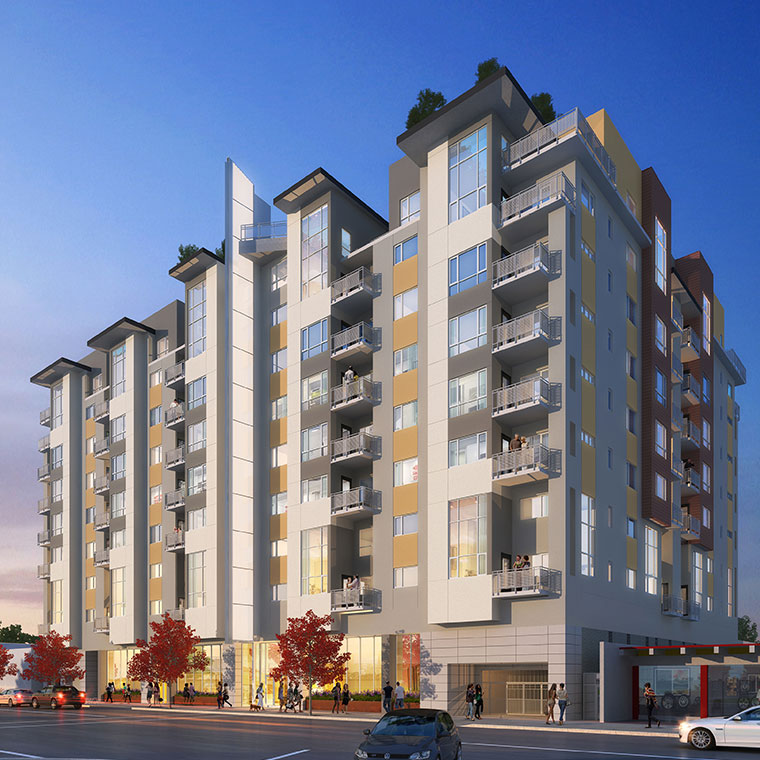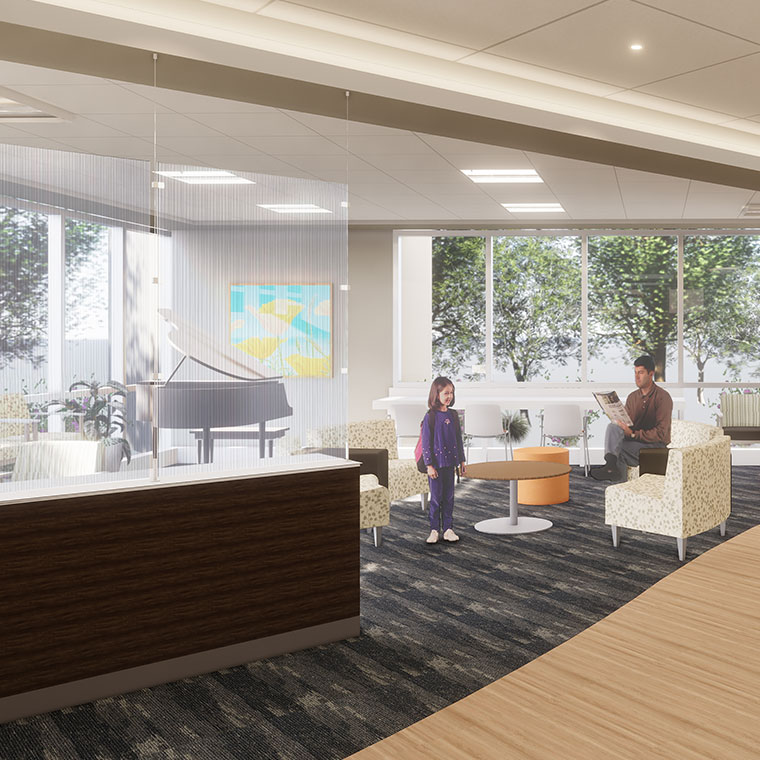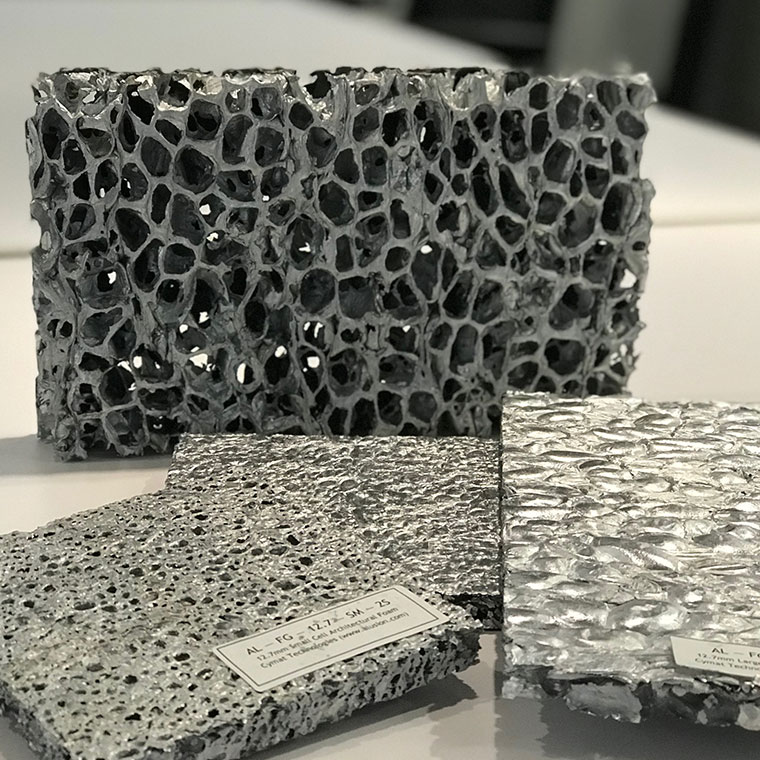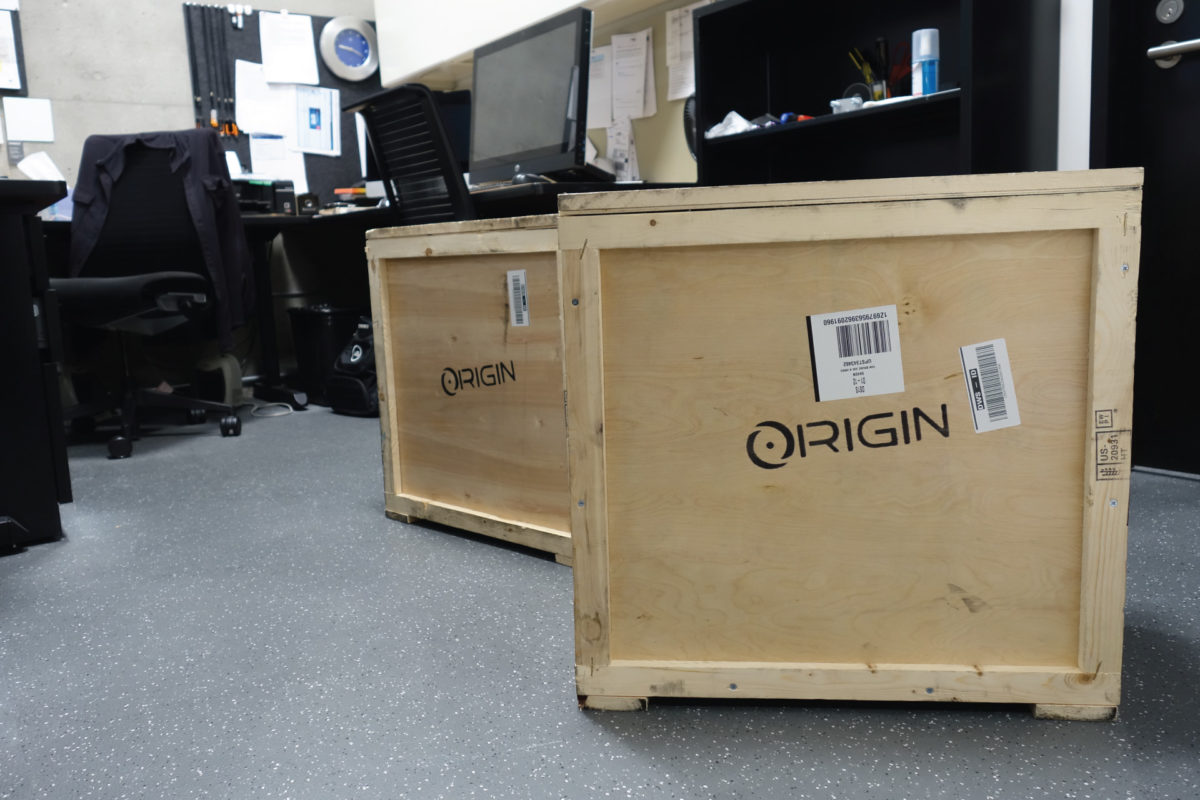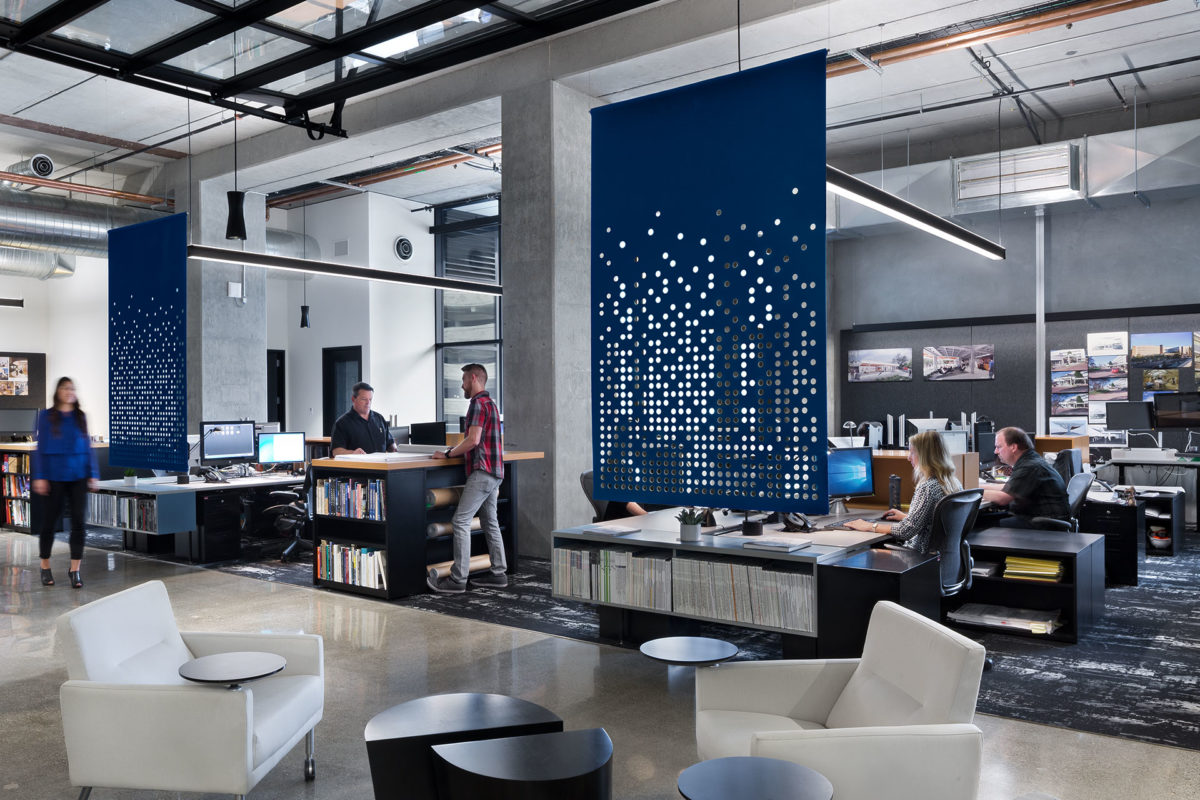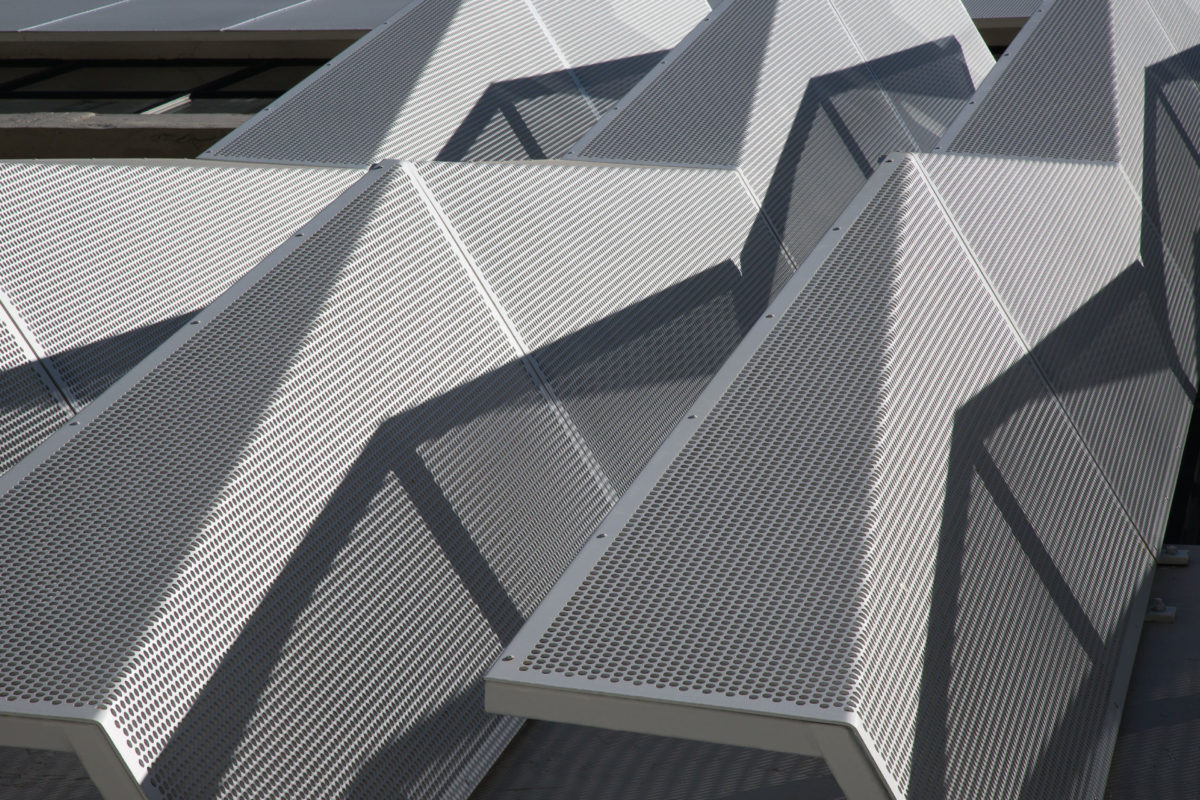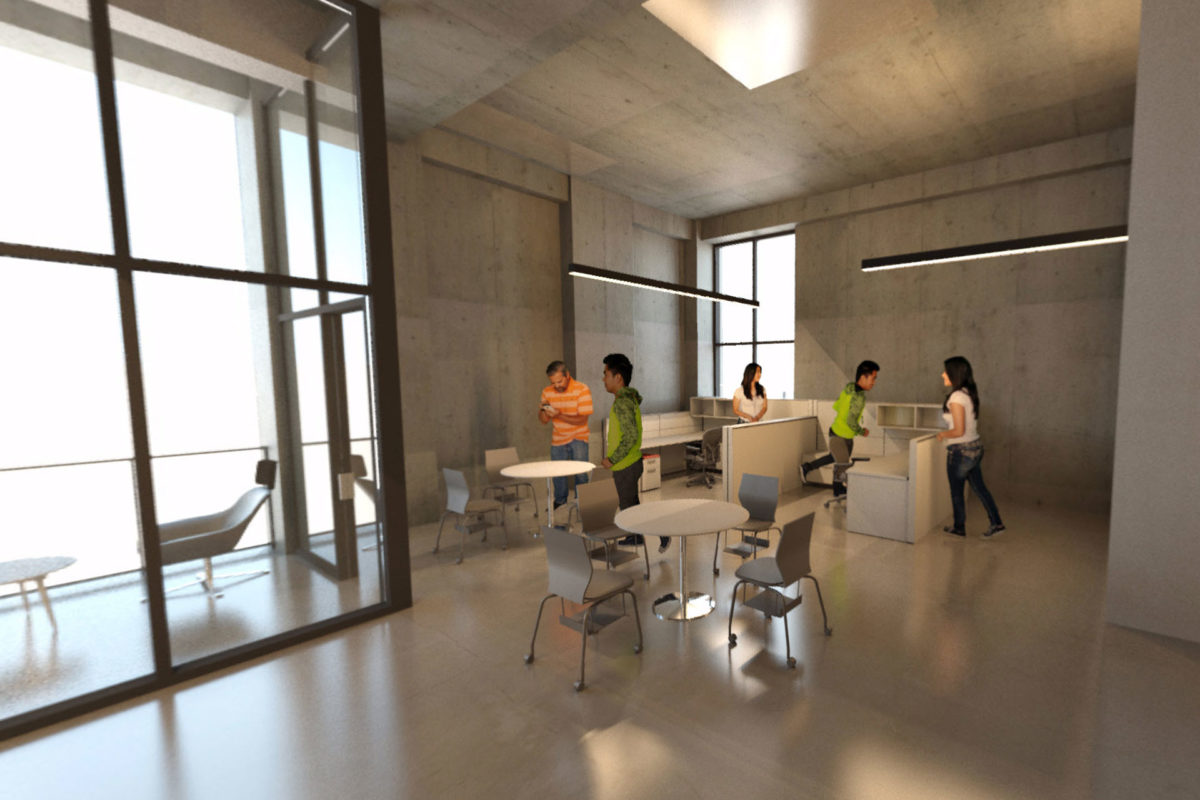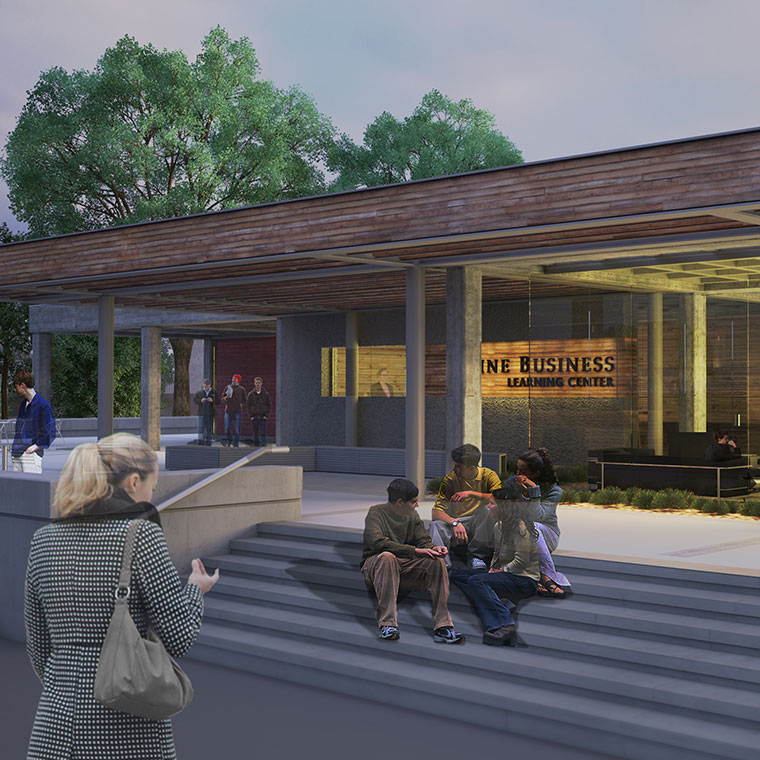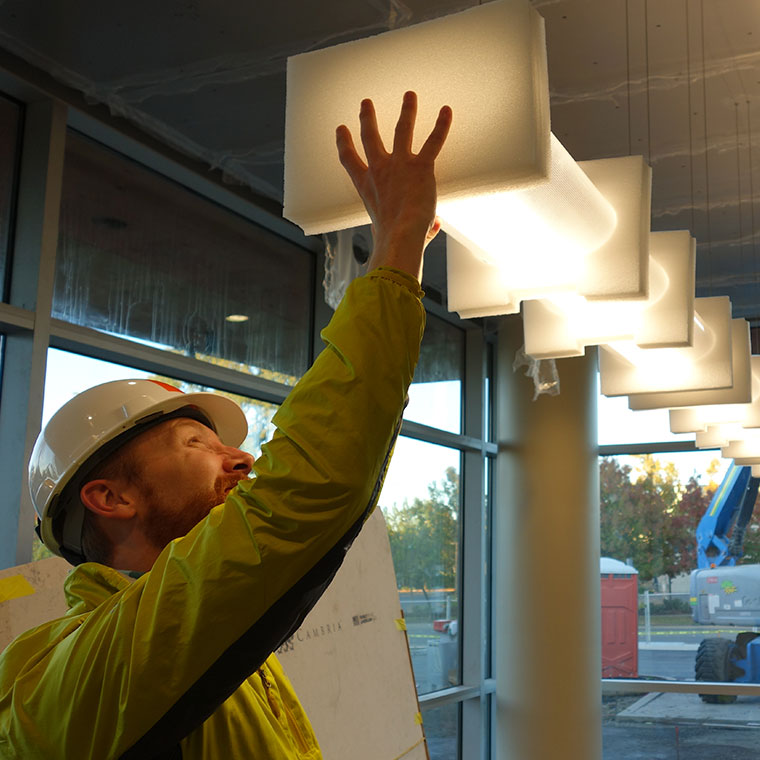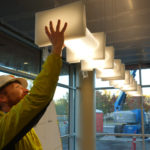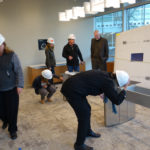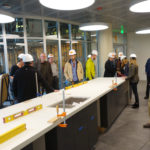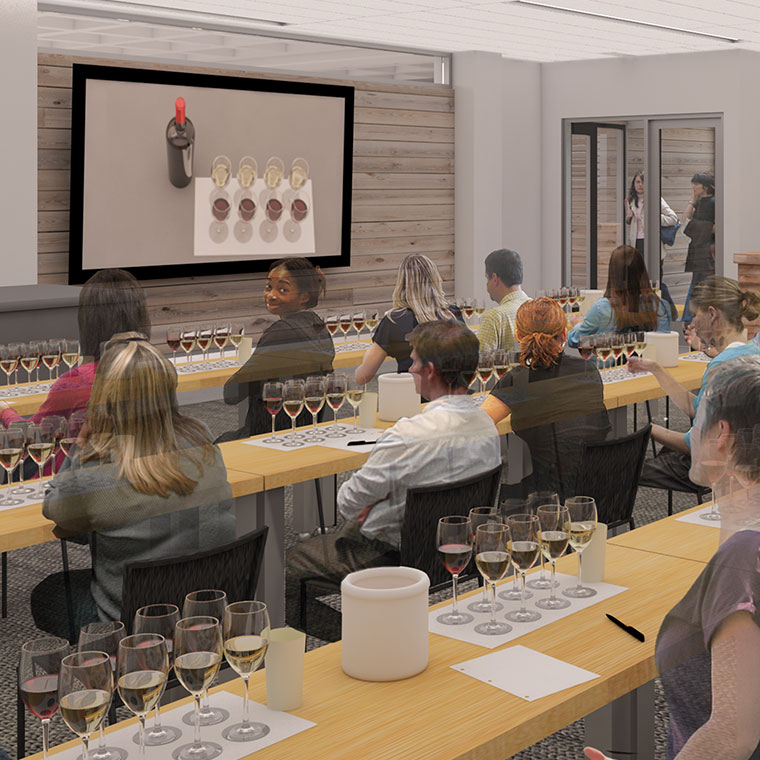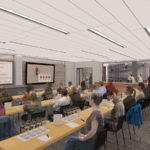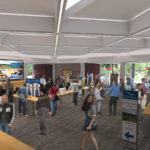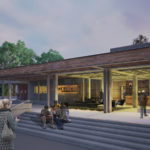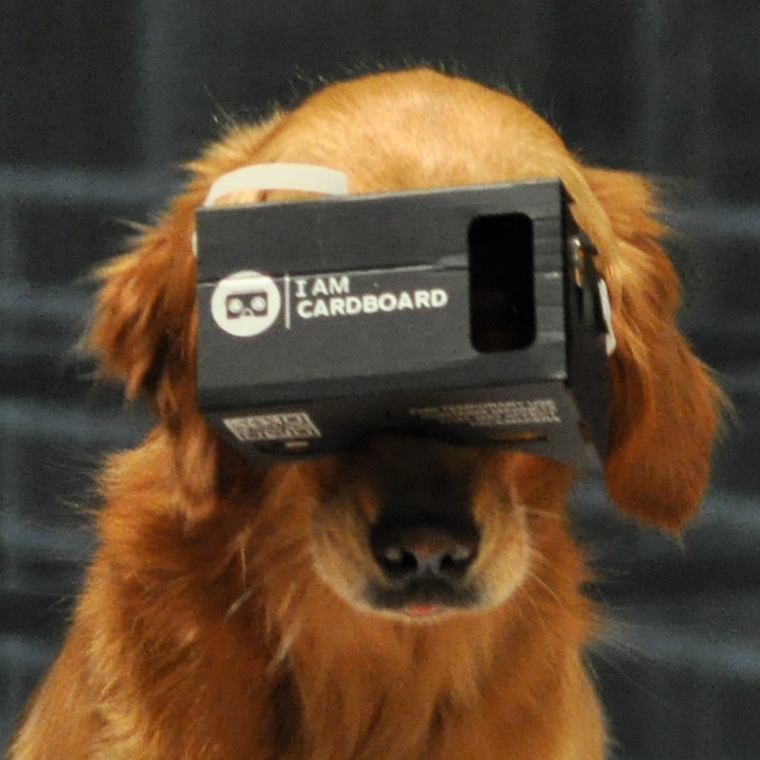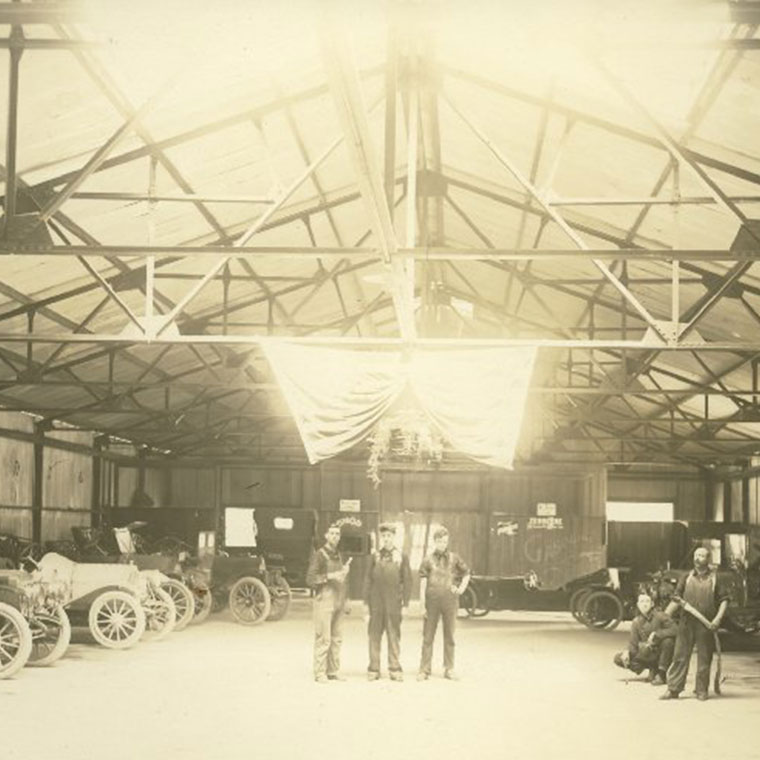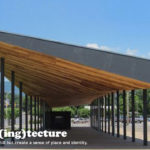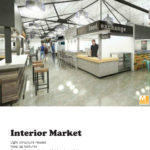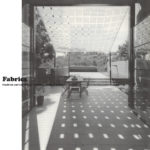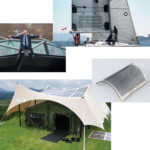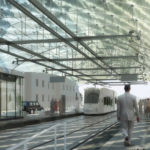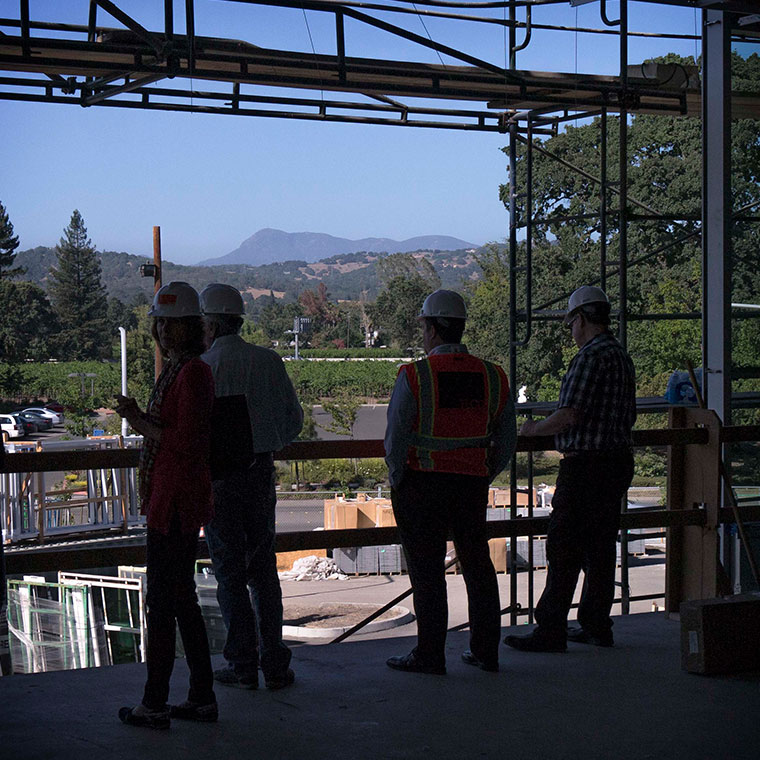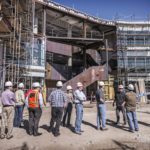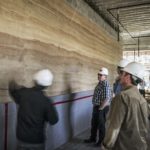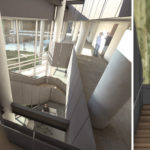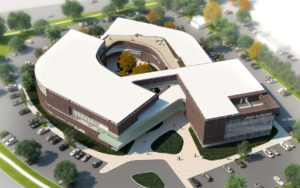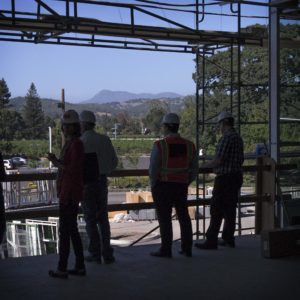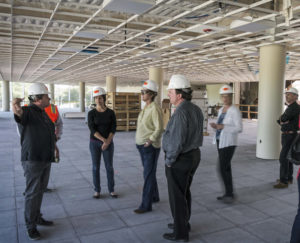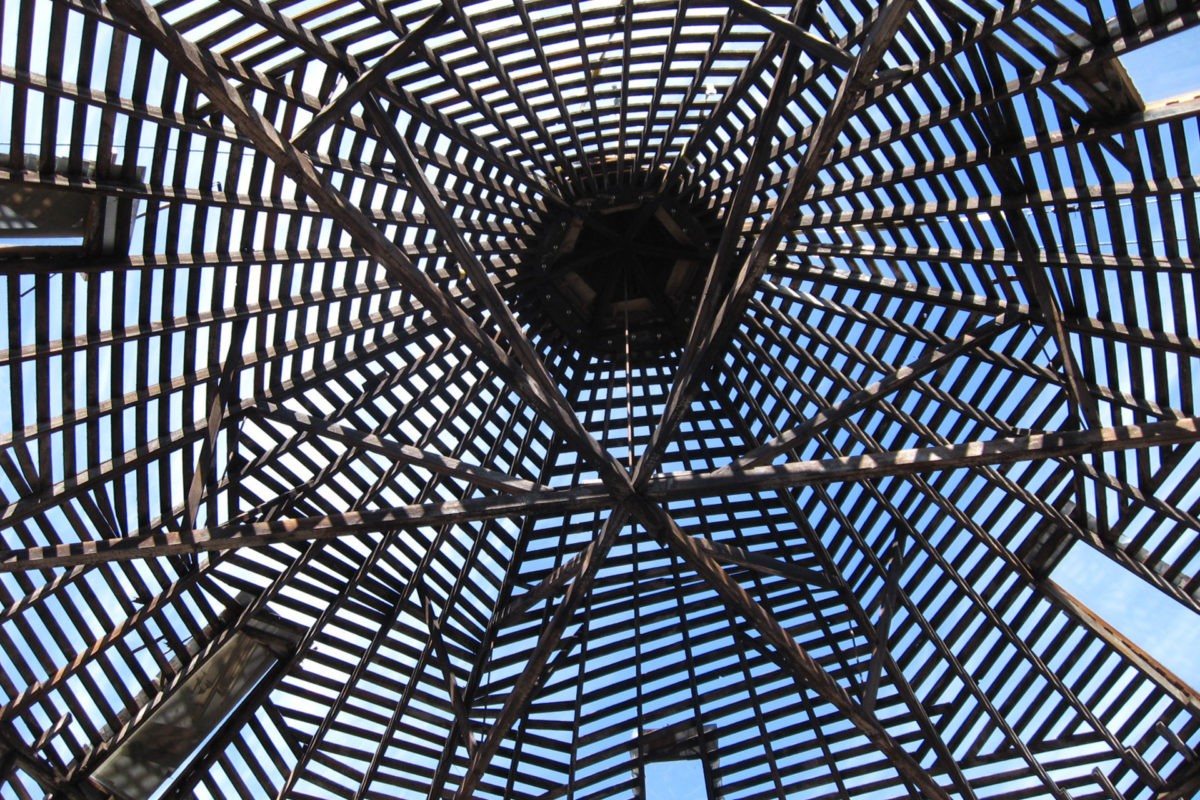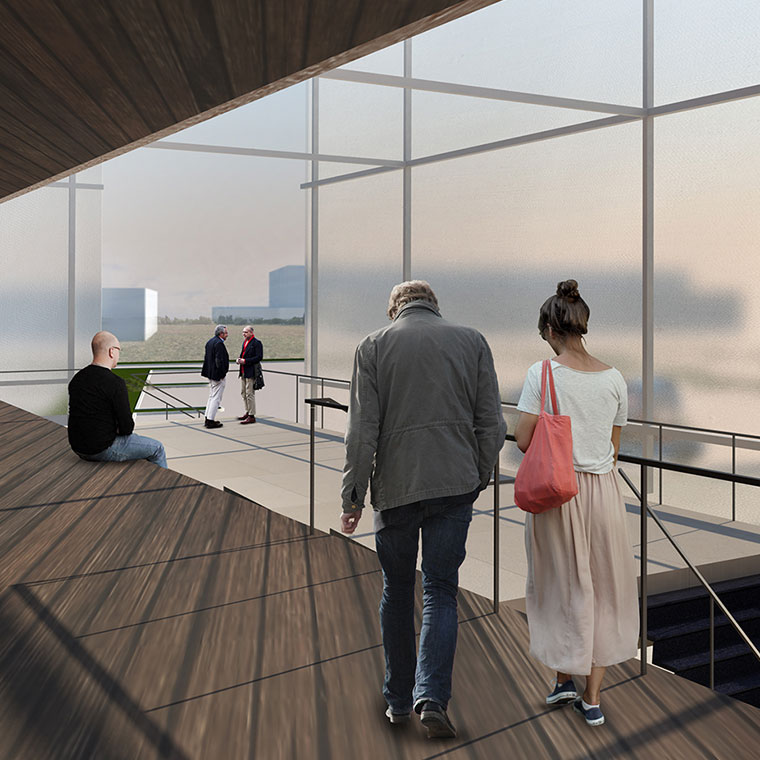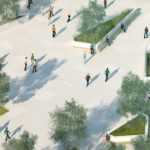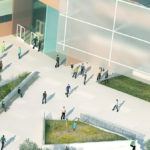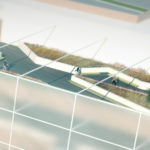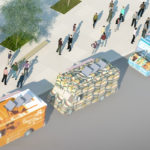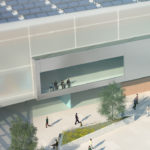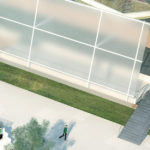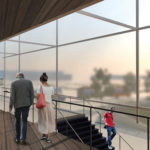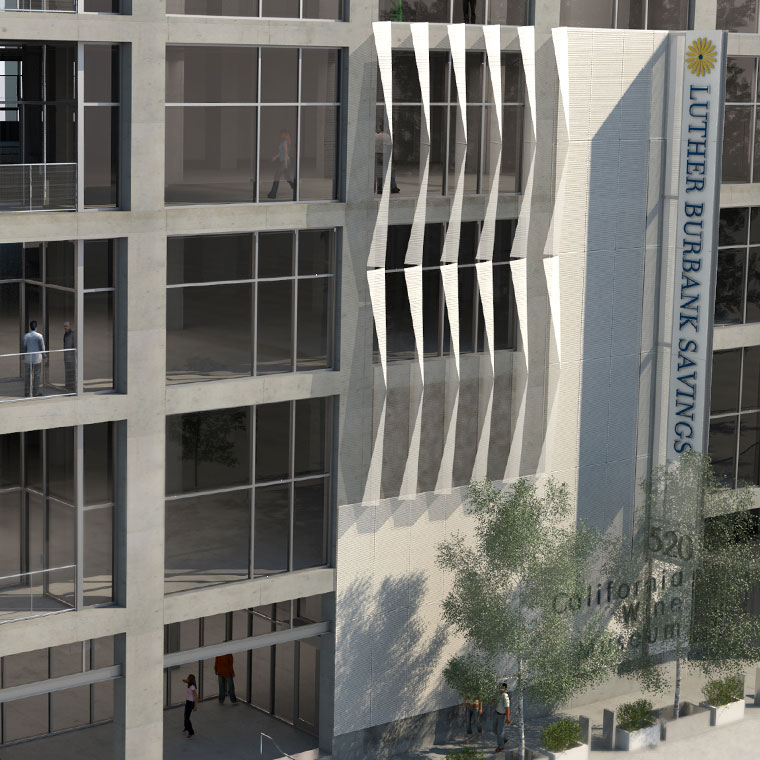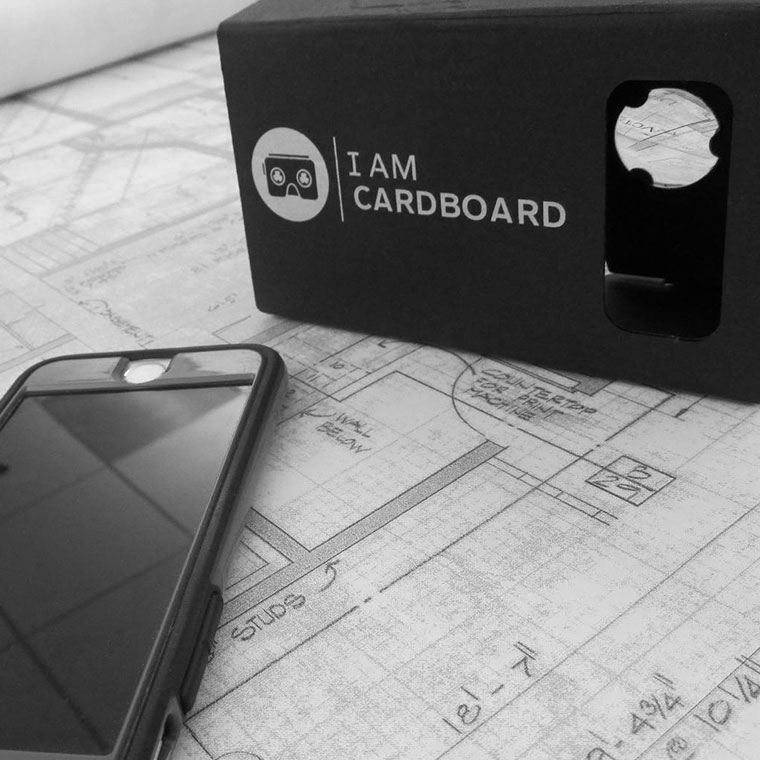Tag: 3D Modeling
Healing Begins At The Front Door
A Look at Stabilized Aluminum Foam
The Origin Arrives
TLCD Architecture’s Office Attains LEED Certification!
 We just learned that TLCD’s Office has achieved certification under the LEED 2009 Commercial Interiors rating system. While this is not our first LEED certification, it’s particularly meaningful since it’s our own office environment.
We just learned that TLCD’s Office has achieved certification under the LEED 2009 Commercial Interiors rating system. While this is not our first LEED certification, it’s particularly meaningful since it’s our own office environment.
Leadership in Energy and Environmental Design (LEED) is one of the most popular green building certification programs used worldwide. Developed by the non-profit U.S. Green Building Council (USGBC) it includes a set of rating systems for the design, construction, operation, and maintenance of green buildings, homes, and neighborhoods that aims to help building owners and operators be environmentally responsible and use resources efficiently.
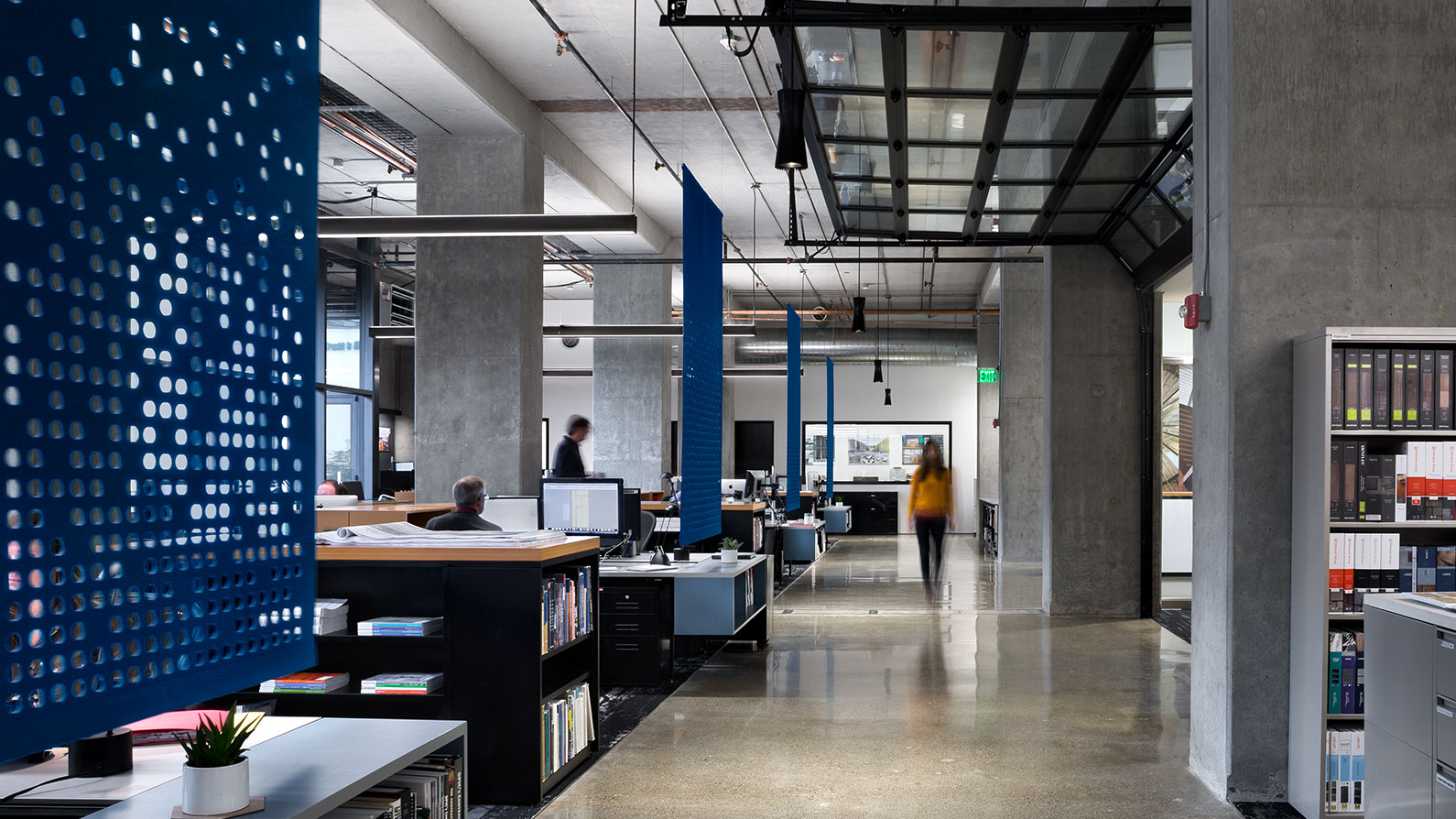
We are proud to have designed a very sustainable office environment, and hope that it will spark interest on the part of our clients and other visitors to our office to do the same.
Commercial Architecture: Metal Origami Cladding Featured on Cover
When TLCD Architecture set out to transform a former telephone switching building in downtown Santa Rosa into a mixed-use project called Museum on the Square, our goal was to turn the windowless structure into a vibrant, urban building with visual appeal. In order to achieve this objective, we overlaid the concrete structure with perforated aluminum panels by McNichols Perforated Metal. Working with fabricator and installer B.T. Mancini, TLCD designed a series of bent panels to achieve a unique sculptural effect. Low and behold, these “origami’ panels (as we call them) ended up on the cover of Commercial Architecture Magazine, along with an article about our use of the perforated metal panels.
Summertime STEM Education and Architecture
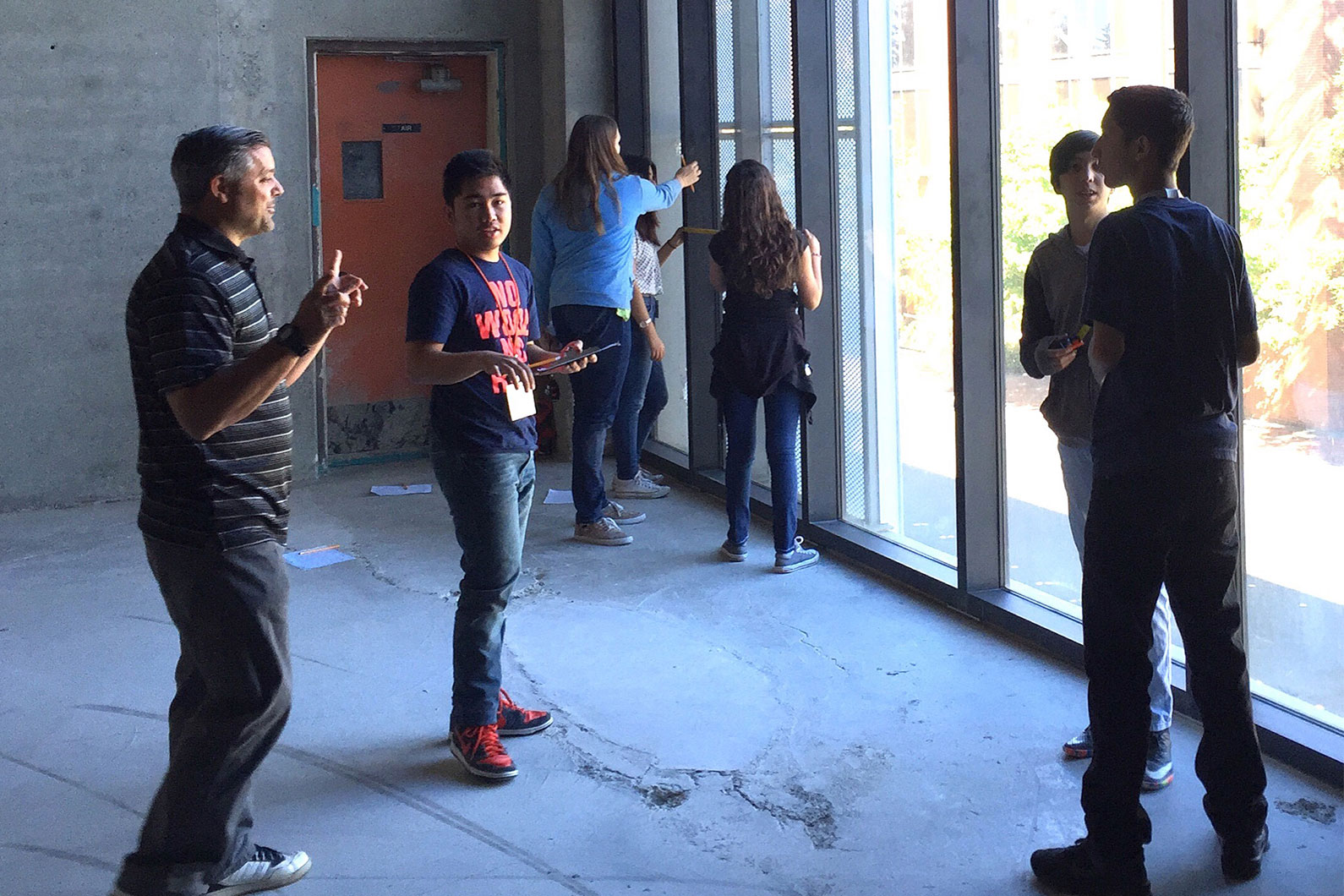 By Carl Servais AIA, NCARB, LEED AP
By Carl Servais AIA, NCARB, LEED AP
The Mike Hauser Academy is a summertime program through the Santa Rosa Chamber of Commerce that focuses on STEM (Science, Technology, Engineering and Math) education. The program provides students entering 9th grade with hands-on experience from STEM related employers in the area. TLCD Architecture hosted the class the week of June 20th and I had an opportunity to work with fellow designers, Nick Diggins and Stacey Walker to shape the curriculum for the week.
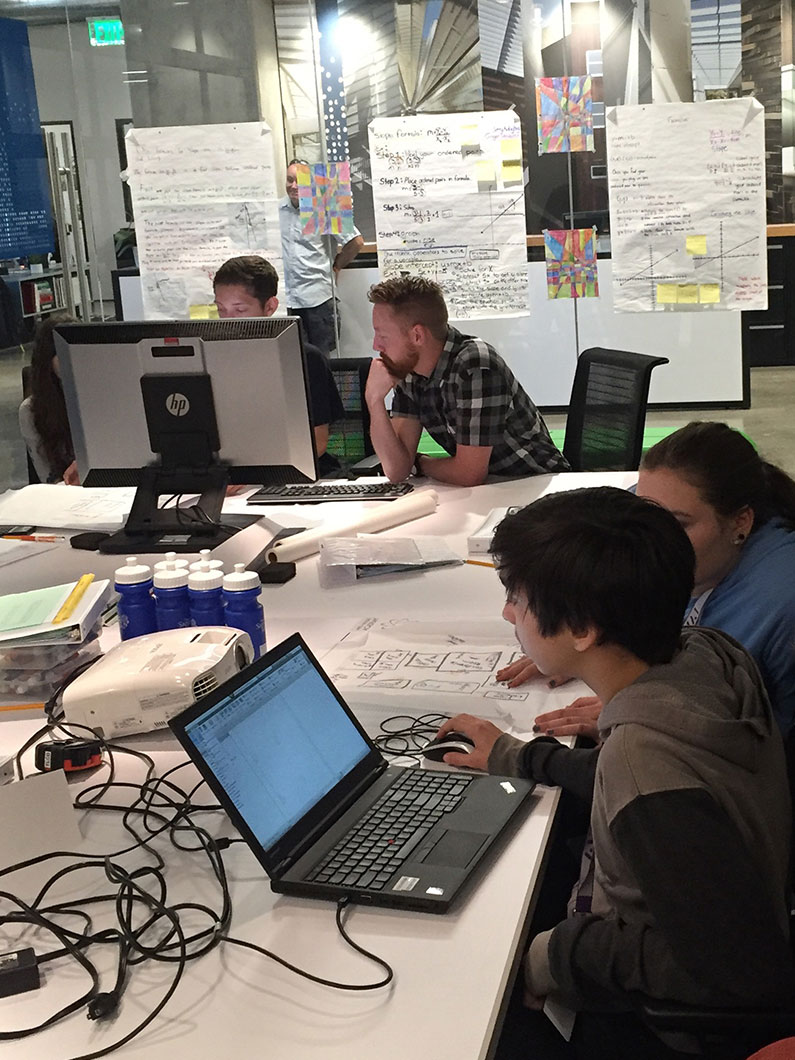
We had a lot of fun leading the students through the process of measuring an existing space, creating scale drawings by hand, developing a design based on a functional program, and finally modeling their design in 3D. The students did an amazing job working together throughout the week, which culminated in a presentation of their design to the group, complete with floor plans and a 3D rendering that could be viewed with Google Cardboard viewers. They particularly enjoyed seeing their own pictures as scale figures within the renderings. Check out these stereo panoramic renderings of the students inhabiting their designs:

Lucas and Ginger
http://pano.autodesk.com/pano.html?url=jpgs/736133b5-4d1f-4157-9609-ffea6be8b99c
Dorian and Janai
http://pano.autodesk.com/pano.html?url=jpgs/4c793c80-ec79-4125-b49d-709875031e62
Jerry and Montse
http://pano.autodesk.com/pano.html?url=jpgs/6fba6e88-9cab-42c4-981b-e570b20bc6ba
TLCD Announced as Architect for Wine Spectator Learning Center

Sonoma State University announced today that TLCD Architecture and BNBT Builders will partner on the design and construction of the Wine Spectator Learning Center in Rohnert Park.
“As the educational nucleus of a thriving regional economy, it was important to us to engage local professionals on this project. We decided after a lengthy review of top quality firms that TLCD and BNBT have the right combination of skill and experience. Over the coming months, a cutting-edge facility will take shape on campus, designed and built to provide the University community a teaching and learning environment that meets its demands and exceeds expectations as one of California’s leading institutions of higher education,” Dr. William Silver, Dean of the School of Business and Economics said.
TLCD Architecture has been working with the Wine Business Institute at Sonoma State since early 2014 to bring high level design visualizations to the fundraising effort and is thrilled to continue as the architect for this project.
“It’s a real privilege to be involved in such an innovative project. Sonoma State University and the Wine Business Institute have taken a very sustainable approach by revitalizing one of the original campus buildings. We believe the transformation will be truly stunning, and provide a perfect home for this forward-thinking regional and international program,” Brian Wright, Principal at TLCD Architecture said.
Who’s Up for a Field Trip… to American AgCredit?
Architecture firms are all about field trips… and often they are tours of our projects under construction. This week, TLCD’s staff got out for a tour of the American AgCredit Headquarters project in Santa Rosa. This landmark 120,000 square foot project is nearing completion with portions of the building to be occupied within a few weeks. It was a great opportunity to tour it and see how many of the key features are taking shape. In the photo above, our team is looking at the rammed earth feature wall which was built early in construction. It was encased in a wooden structure for protection, and then the building was constructed around it. The wall is a stunning reference to the soil that makes agriculture possible and supports American AgCredit’s mission of farm lending.
One of many exciting design elements will be perforated zinc exterior cladding, which is only now beginning to be installed. Over the next few months these zinc panels will completely transform the appearance of the building. Not only will they visually define the facade, the panels will also provide sunshading that will significantly reduce the cost of cooling the building.
On the second floor, we walked one of the sky bridges with a feature wall of channel glass. From the outside, the glass provides a distinctive entry element, but from the inside, it creates wonderful, diffused lighting for what will be a casual work area for the employees of American AgCredit. This sky bridge will have soft lighting to one side and clear views to the inner courtyard on the other side.
Throughout the tour we did what most architects do… looked up, looked down, looked all around. These tours are a learning process for the entire staff and also expose us to ideas, materials and solutions we can use on other projects.
Serious Fun: California’s Wine Business
Anyone living in California knows the impact the wine industry has on our economy. California produces 90% of the wine for the US with an estimated retail value of $24.6 billion. California is also becoming the leader in wine business education for professionals worldwide. What you might not know is that Sonoma State University in Rohnert Park, is leading the way with its innovative Wine Business Institute (WBI). The WBI is an education and research institute within the School of Business and Economics. It was created as a public-private partnership with a clear mission: to educate students, provide research and develop programs that would support the needs of one of the primary industries and employers in our region and around the world. WBI is the first and only program in the US to focus exclusively on the business aspects of the wine industry, offering both an undergraduate degree and MBA program.
TLCD Architecture, located just minutes from Sonoma State University, has a diverse practice that includes work for both winery/hospitality and educational clients. These two areas of expertise meshed beautifully when TLCD was selected to design the new Wine Spectator Learning Center at Sonoma State. It’s given us an opportunity to explore the programmatic needs of wine business and marketing majors and assist the school in developing high level design visualizations for fundraising efforts.
Our work with the WBI began by meeting with the administrators and faculty to develop a vision and concept for the new facility, which will comprise a complete remodel of the original University Commons Building. From that initial vision we created several renderings of the design concept, which in turn helped to generate several large donations for the project from the Institute’s partners in the wine industry. Schematic Design has been completed, and we’ll be moving into the next phases of design shortly. We’re fortunate to have Summit Engineering on our team, who also happens to be one of the premier winery engineers in Northern California.
It’s incredibly fulfilling to be part of a program that will educate and train the next generation of wine business professionals and entrepreneurs. While TLCD Architecture’s work extends throughout Northern California, we have been in business here in Sonoma County for 50 years. Contributing to our community, quality education and a thriving business culture is important to us.
Wine education is not all about classes, research and training. It’s also about immersing ourselves in the culture of wine and having some “serious fun.” We recently teamed with our friends at Summit Engineering for a showdown at the Sonoma County Harvest Fair “World Championship Grape Stomp” competition. Celebrating its 41st year, the Harvest Fair celebrates Sonoma County’s harvest by honoring world-class wine, beer and culinary creations.
Click the video below to see the TLCD Architecture/Summit Engineering Grape Stomp Showdown!
More articles about the Wine Spectator Learning Center
Wine Spectator Donates $3 Million to Sonoma State University
SSU Wine Institute Gets Another Major Gift
Peter Michael Adds Its Support To Wine Spectator Learning Center At Sonoma State University
Game On… Architectural Renderings Go Interactive
Architecture is a complex process that is integrated with massive amounts of information requiring coordination between many parties. We use software specifically developed for this type of information management (BIM), but what’s so interesting is all this information is imbedded in a digital 3D model. We are constantly finding new ways to use and extract this information throughout the design process.
The current hot trend in design visualizations is the integration of virtual reality (VR) rendering into the Revit (BIM) workflow. I’ve had a lot of fun sharing this new type of presentation with clients, staff, friends – even Angel our office dog tried it out using Google Cardboard. After showing my 9-year old son this cool technology, which literally puts the viewer in the space, I realized it’s already out of date when he said, “Dad, all you can do is look around.” It hit me that the future is here. His generation will be expecting software that enables true interactive immersion. What if we, as architects, can design workflows that allow the user to interact with a space while it’s still in development – much the same way we build physical models to critique and explore ideas?
A physical model has always been an easier tool for sharing ideas than technical drawings. A model isn’t static – you can pick it up, rotate it, move around it, and feel what the idea is in a physical solution. Models are the universal language of design and they help us understand the concept of three-dimensional problem solving. In the digital landscape it’s quickly changing how we share ideas with each other and our clients.
TLCD’s culture is very supportive of testing new software. If you follow trends in new techniques of rendering and architectural visualizations, you may have seen some examples of interactive environments taking off recently. There are many resources for starting this workflow and one that we’ve been testing recently is Unreal Engine 4. We took this software for a test drive and modeled our new office space. Rather than strapping on VR goggles, our staff can walk through our new office and experience it from the comfort of their own computer monitor (view video above).
On the more technical side, how does this type of software change our current workflow? For a current static rendering like the one shown in the first part of the video, we can prime a digital model for rendering pretty quickly. Using the power of our render farm, we usually run 80 cores (CPU’s) resulting in one render after a few hours. Not too bad considering we used to wait days for the same output only a few years ago.
Now if you want video, you are looking at a lot of time and resources to develop an in-house animation that is usually under a minute in length. At the end of multiple days of work you have an amazing video to share with clients and others (and everyone loves movies, right?) That thirty-second video loses its sparkle when you realize that you need to change something in the design as a result of meeting comments. Usually you can’t re-render a whole walkthrough because of tight schedules – but what if you could? What if it was just a part of the standard workflow and you could render the space and were allowed to change views or make a movie within minutes?
Why not turn the scripted walkthrough into a “game” and let someone else walk around and experience it in real time! This is the direction we are headed at TLCD… and virtual reality is just fuel to the fire. Integrating the visual experience with a physical/digital experience is so exciting to us as architects because we are integrating it into our early designs as a linkable workflow. Immersing yourself deeper into an environment is an architectural experience beyond the average visual.
Learning to craft a visualization to create an interactive experience is the new art of rendering. Video game developers have been doing this for years and the most current digital environments are so immersive it almost feels real. This way of sharing a design brings in thoughts of simple actions infused with realism – like adding sounds of the city when you open a door. We see so many possibilities for this in the near future. Imagine an environment that allows end users to experience the space and use it as a learning tool with interactive virtual diagrams.
Our goal is to integrate this software into our designs to create new modes of integrated thinking for clients who are looking for innovation and value for their project. At the moment, we are only designing buildings, but soon we might be creating worlds! This is too much fun to be had all alone, come join us!
 No animals… or architects were harmed in the making of this blog post. Most days Angel can be found at our office brightening people’s days while stopping by their desk for a treat or pat on the head. Nick can be found any number of places…job sites, his work station, client meetings, or low crawling to sneak up on his unsuspecting coworkers!
No animals… or architects were harmed in the making of this blog post. Most days Angel can be found at our office brightening people’s days while stopping by their desk for a treat or pat on the head. Nick can be found any number of places…job sites, his work station, client meetings, or low crawling to sneak up on his unsuspecting coworkers!
Praxis in Action: Healdsburg’s Cerri Building
In May we put up a post, Praxis: Practical Application of a Theory that talked about the stage in our process where investigation and critical analysis leads to idea generation and critique. We routinely tap into the collective expertise of our team for this critique process – whether it be a casual discussion or a full charrette. Yesterday we held a firm-wide design discussion of one of the more unusual projects in our office – the historic Cerri Building in Healdsburg.
TLCD Architecture is teaming with Healdsburg architect Alan Cohen in the design of the this downtown parcel that will accommodate the City’s farmers market and additional parking. At issue is whether to preserve an existing structure on the site, or to remove it and install new shade structures with photovoltaic (solar) panels. Although very early in the design process, yesterday’s discussion yielded many good ideas that the design team will explore. The main concept is to transform the existing building into a new space that will serve many functions and add to Healdsburg’s vibrant downtown culture. We are looking at strategies that allow for a stronger connection with the adjacent street, sidewalk and most importantly, the visitor. The team also shared inspiration photos that suggest other directions for the design, such a new structure providing indoor/outdoor space for the farmer’s market, as well as alternate surfaces for the photovoltaics.
These open office design conversations are what keeps our projects fresh and the design concepts clear and focused. We refine our ideas by critiquing our work as a group and we are always fascinated by the power of sharing with each other.
Design Features Take Shape on New American AgCredit Headquarters
This week TLCD Architecture’s staff toured our American AgCredit project, a 120,000 square foot, 3-story headquarters building just north of Santa Rosa. The project is scheduled for occupancy in early November and is currently at an exciting stage of construction, with many facets of the design taking shape.
Perhaps 2 of the greatest points of interest were the grand stairway, and a rammed earth wall. The grand stairway connects each of the 3 floors in a dramatic atrium that opens onto the building courtyard. The stair soars through the space at varying angles, and is clad with steel plate railings that were individually lifted into place by crane. These will be “blackened” by an artist in order to provide a deep, black patina. When the building is complete, a 3-story high cowhide mural by Kyle Bunting of Austin Texas will be a prominent feature of the atrium.
The rammed earth wall was built early in construction. It was incased in a wooden structure for protection, and then the building was constructed around it. The protective wood structure was removed just early this week, and so we were some of the first to see this amazing wall, which will form the backdrop to the main reception desk. The wall is a tangible reference to the soil that makes agriculture possible, a powerful reference to American AgCredit mission of farm lending.
 The floors are raised pedestal construction, which allows the reconfiguration of under floor electrical, data, and other systems. In this project we are also using the space below the floor for the supply of conditioned air, an very energy-efficient, quiet and healthy system known as displacement ventilation. We were able to observe the below-floor infrastructure in areas where the floor tiles have yet to be installed. Among other things, we saw “air highways” that are being constructed to efficiently deliver air to the far reaches of the building.
The floors are raised pedestal construction, which allows the reconfiguration of under floor electrical, data, and other systems. In this project we are also using the space below the floor for the supply of conditioned air, an very energy-efficient, quiet and healthy system known as displacement ventilation. We were able to observe the below-floor infrastructure in areas where the floor tiles have yet to be installed. Among other things, we saw “air highways” that are being constructed to efficiently deliver air to the far reaches of the building.
The exterior of the building, aside from dramatic, sweeping curves and multiple “sky bridges”, has an appearance not unlike many other modern structures. However, beginning in late August an exterior “skin” of perforated zinc panels will be installed. These zinc panels will transform the appearance of the building, and will visually articulate the façade while providing sunshading that will significantly reduce the cost of cooling the building.
Architecture Reborn: Fading Past to Vibrant Future
By Kevin Teel, Project Architect
 TLCD Architecture has had the opportunity to work on several diverse historic projects over the last decade – from the 1912 stone Vintage Hall at St. Helena High School – to the 124 year-old DeTurk Round Barn in Santa Rosa. We are set to begin work on another storied historical structure in Healdsburg – a 1920’s warehouse called the Cerri Building. Historic projects are of particular interest to me because we each have our own way of “seeing” the character of a building, leading to unique interpretations and end results.
TLCD Architecture has had the opportunity to work on several diverse historic projects over the last decade – from the 1912 stone Vintage Hall at St. Helena High School – to the 124 year-old DeTurk Round Barn in Santa Rosa. We are set to begin work on another storied historical structure in Healdsburg – a 1920’s warehouse called the Cerri Building. Historic projects are of particular interest to me because we each have our own way of “seeing” the character of a building, leading to unique interpretations and end results.
My personal journey began in Colorado and Arizona – places where I honed my own process for interpreting the history of buildings. Though most buildings I refer to are not historic landmarks, the process of revealing their inner character is the same.
I began to roam old mining towns and backcountry while attending college in the Southwest. There is a romance for the bucolic nature of dilapidated barns and mining structures in this area, but for me the real excitement is in imagining these places in their heyday. What was happening on any typical day? I pull each of my senses into the story and build around the experience. While none of these mental images may have happened, they help set basic parameters for how I would investigate design decisions in future projects. This same philosophy governed my thesis work in Arizona, when exploring adaptive reuse ideas of mining ruins near Prescott, Arizona.
Adaptive Reuse in my mind, is a process of inspiration and evaluation that allows the original building to shine, while simultaneously providing for current needs, regulations and community desires. It attempts to fuse, not separate, these elements into a lasting whole that, when done well “just seems right.” This approach doesn’t lessen the importance of the original building – it simply highlights it. It doesn’t suggest superiority of contemporary materials and methods; it attempts to show commonality of past and present construction means. This is why initial observations are so important to maintain, even in the presence of often complex and competing concerns.
My first visit to DeTurk Round Barn in Santa Rosa was not unlike entering the old mining structures in the Southwest. The barn was boarded up and in quite a state of disrepair, but I felt an immediate connection. After I got over wanting it for myself (yes, adaptive reuse can be a residence), I was immediately struck by what a calming space it was. This is when I began to consider the original function – the barn was built for horses, but they were trotters, not barrel racers. I imagined a well-lit space with beautiful horses steadily moving around the inner ring, clean horse stalls around the edges and hay carefully stacked overhead. This spirit of calmness would be fundamental to the success of this project, no matter the amount of chaos in getting to the finish line!
Next, I was amazed at the light quality of the barn considering every ground floor window was boarded up and covered with plastic. The only light was from the original, dusty skylights above. Clearly this space could be light and bright again. Sometimes seemingly mundane ideas, such as seismic mitigation, take over my thoughts, but this is almost without exception an opportunity to enhance our interpretations.  For example, wooden posts carrying the weight of the loft would not be adequate to meet modern codes and would need retrofitting. These materials could simply be construction waste, or we could find a way to “carry history forward.” Spectacular old growth redwood (a huge piece of our local history) was resawn and used as interior finish in the barn, exposing its beauty for future visitors to enjoy.
For example, wooden posts carrying the weight of the loft would not be adequate to meet modern codes and would need retrofitting. These materials could simply be construction waste, or we could find a way to “carry history forward.” Spectacular old growth redwood (a huge piece of our local history) was resawn and used as interior finish in the barn, exposing its beauty for future visitors to enjoy.
With this inspiration in mind, and as a foundation, the question becomes “What is the vision for this building now and in the foreseeable future?” This is where public input and design team coordination comes into play. Although the community’s feedback reduced the project scope considerably, it didn’t reduce the challenges TLCD Architecture would face. The firm still needed to rehabilitate an extremely unique and dilapidated 8,300 square-foot round barn while maintaining its historic integrity. We were also tasked with seamlessly incorporating a kitchen, restrooms, mechanical/electrical and storage rooms, as well as integrating 21st century technology to ensure DeTurk Round Barn would become a popular event space for the City of Santa Rosa.
TLCD now has another wonderful opportunity to play a role interpreting the history of the Cerri Building in Healdsburg. This is another building with a long, storied history and most certainly a quite different future. It will not be possible without community input, technical expertise and a fundamental understanding of the nature of the space and surrounding environment.
DeTurk Round Barn has been one of TLCD’s most published and recognized projects… I hope you will find the following links of interest:
AIA California Council, Adaptive Reuse Merit Award 2014
Retrofit Magazine Article “Barn Raising”
GreenSource Magazine Article “Uplifting a Round Barn”
Big Ass Fan Case Study DeTurk Round Barn
View video below for more background on the DeTurk Round Barn
Design Competition Fuses Primary Care and Mental Health Services
The healthcare landscape is always changing as providers evolve the framework for care and adjust capital plans to maximize shifting reimbursement models, stay current with medical technology and respond to shifting political priorities and societal demands. In recent years, the Affordable Care Act and the cry for improved mental healthcare services have pushed the industry to increase outpatient primary care and mental health capacities. This trend is leading some in the industry to cast away old notions and stigma – and seize the opportunity to make mental health an integral part of primary healthcare.
In a recent design competition, TLCD Architecture explored how the fusion of mental health and primary care could be supported in the built environment. The resulting outpatient campus brings primary care and mental health together in a unified, community-focused design while addressing privacy and security concerns. The concept of total patient wellbeing begins with easy access for patients and incorporates healthy opportunities of exercise, farmers markets, community activities, health education and medical care. Giving people a reason to visit the site on a regular basis for everyday activities serves to promote health and wellbeing.
During the design process TLCD Architecture used our own healthcare experience that includes recent work on acute and outpatient mental health facilities, as well as assembling a team of designers, planners and engineers with diverse backgrounds to bring fresh perspectives to the discussion. We also used the growing body of research that brings these ideas into focus and provides motivation for healthcare providers to integrate primary care and mental health services that result in improved patient care, financial efficiencies and increased marketplace appeal.
As designers, TLCD Architecture believes that it’s our responsibility to bring design and operational innovations and new thinking to our clients so they are well informed as they make decisions that shape the future of healthcare.
For more information visit these resources.
Integrated Behavioral Health Project
Behavioral Healthcare
Article: More ACOs Look to Behavioral Health
World Health Organization
Report: Integrating mental health into primary care: a global perspective
PRAXIS: practical application of a theory
What is your work environment like? Does it motivate and energize you? Well it should! Each workplace has an optimum environment in which to achieve maximum functionality and purpose. As architects we are often called upon to understand and develop what this might be. Most of the time this moment in the design process is called programming, but there’s an even more important stage prior to that. Analysis! Developing a strong base of information can begin to inform designers beyond the norm and make something really unique for a client (or ourselves). This process of investigation, research and critical thought allows us to map information from all influences of a project.
Reflection is another key piece of our design process. We gather all the findings from the analysis stage and move to graphic representations as tools for idea generation and critique. For instance, the Praxis infographic below breaks down one idea to it’s simplest form by graphically telling a story. In this example, “the way we work” was a key element for developing the design of our firm’s new office. Rather than just laying out how many people and offices get implemented into a floor plate, we dove into our office culture. We really wanted to understand what would empower our designers and staff. Read on after the graphic…
 At TLCD Architecture’s new office, which is currently in design, we are consciously surrounding ourselves with our work – a sort of demonstration space to show what we are doing at any given time. You may visit one day and see a process of design happening right in front of you… creating spontaneous interactions between people across multiple projects. Design feeds off of strong studio cultures, and to strengthen ours, we are embracing the process of design and implementing it even further into our own space.
At TLCD Architecture’s new office, which is currently in design, we are consciously surrounding ourselves with our work – a sort of demonstration space to show what we are doing at any given time. You may visit one day and see a process of design happening right in front of you… creating spontaneous interactions between people across multiple projects. Design feeds off of strong studio cultures, and to strengthen ours, we are embracing the process of design and implementing it even further into our own space.
The practice of architecture and designing space for people is an amazing experience that TLCD gets to participate in everyday. We thought our own office space should share this process and not hide it. As we move to the next phase of design, we will begin to activate the space through the use of models, renderings and other visualization techniques. Recently, our staff got together to see what the new office space could look like using a new iPhone app and a simple cardboard box.
The built environment is in constant evolution and it’s a very exciting time for architecture and technology. Having the right team to take you to new levels means that we have to constantly be able to adapt, evolve and learn from each other. Our team thrives off the mutual respect, creative energy and ideas we can generate together. We can’t wait to show you what this looks like at TLCD’s new office, but more importantly to put it into action for our clients. Stay tuned!
Revit Virtual Reality…What?!
Nick Diggins, Associate AIA
Recently, Carl, Phil and I watched a webinar about cloud rendering in Revit. I had seen this process emerge some months back and Carl and I briefly took a look at it. However, we quickly discovered a major drawback of not being able to use custom textures in the cloud. Out of the box texture mapping usually results in less than adequate representation of your design. Well guess what… you now can incorporate as many custom textures and material assets as you’d like!
Revit has been one of the slowest rendering engines out there, but I’ve always been impressed with its capabilities when it came to doing interior rendering for a native program. Time is a major factor in our business, and slow is a “no go”. A 12-20 hour rendering is not an uncommon thing with geometry heavy models, even with a render farm. Now with cloud rendering, we can send multiple views and let the magic and speed of the cloud to do its thing, while we keep working. An important thing to note is that renderings are vital for developing and sharing designs. Architects want to get their clients “into” the design, and a rendering can be great at starting to describe the space. Here’s the cool part, with Autodesk’s Cloud Rendering we are able to literally put the viewer in the space. It’s called stereo panorama (more about it here) and it’s transforming the way we use Revit with new levels of workflow for developing and sharing designs on the fly, not only with clients, but with each other.
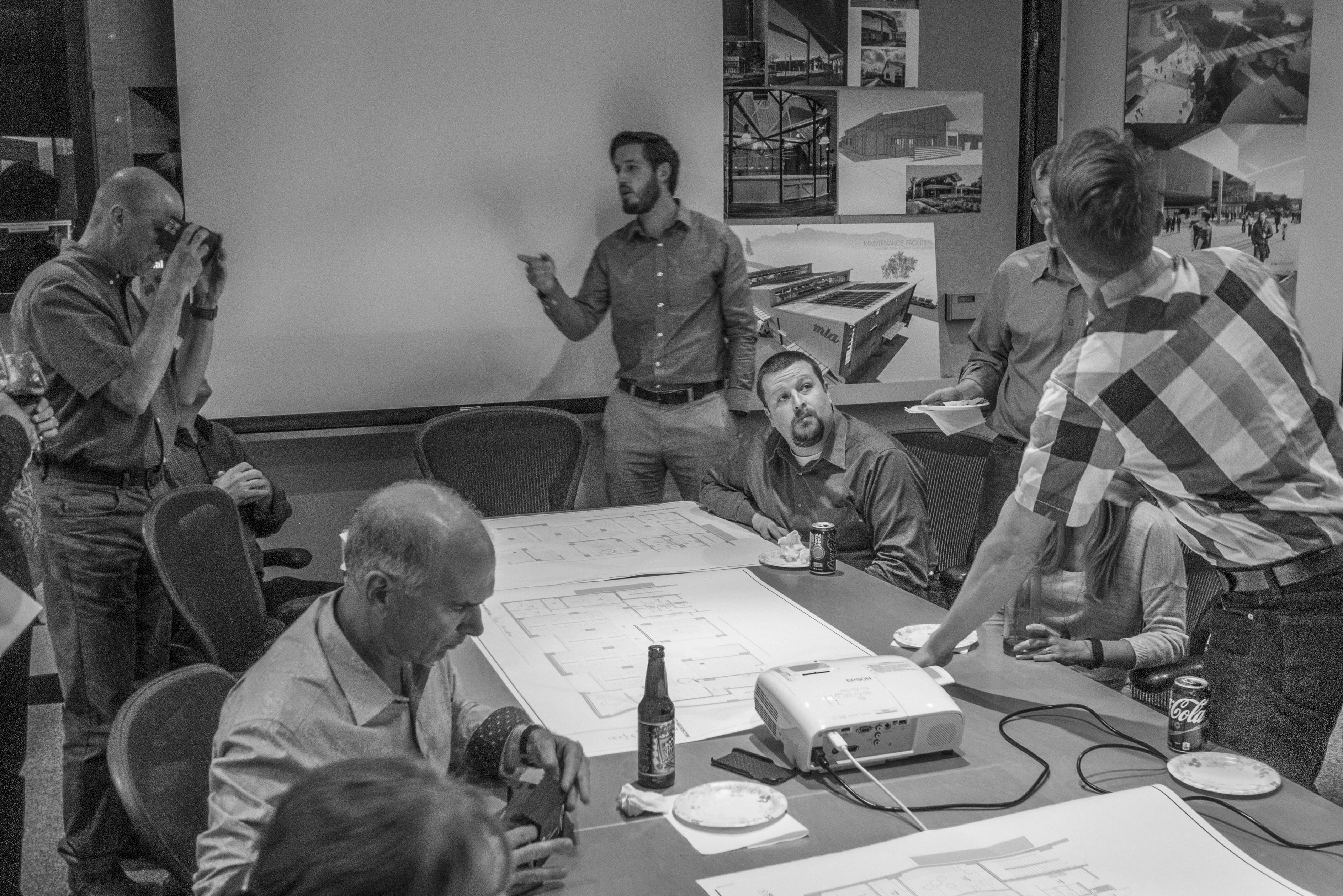 I decided to give it a go and developed several views of 3d panoramas of a current office interior design. I had less than 6 hours for developing the scene materials, lighting and final render time, and little room for production time. I was able to fire off multiple draft renders during the process and keep working the scene similar to our backburner setup for 3dsmax. This was during normal work hours though so backburner was unavailable. Normally this type of work would have been rendered over a weekend but that was not the goal of the exercise. Once I had the developed views uploaded in the cloud, I had Autodesk sprinkle some magic over the top of them. Here’s where we take it up a few more notches, by pairing Cloud Rendering with a couple of iphones and pieces of cardboard, suddenly we were immersing the whole office into the design. You can stand and look all the way around you, with total freedom – and with your body rather than a computer mouse. Amazing!
I decided to give it a go and developed several views of 3d panoramas of a current office interior design. I had less than 6 hours for developing the scene materials, lighting and final render time, and little room for production time. I was able to fire off multiple draft renders during the process and keep working the scene similar to our backburner setup for 3dsmax. This was during normal work hours though so backburner was unavailable. Normally this type of work would have been rendered over a weekend but that was not the goal of the exercise. Once I had the developed views uploaded in the cloud, I had Autodesk sprinkle some magic over the top of them. Here’s where we take it up a few more notches, by pairing Cloud Rendering with a couple of iphones and pieces of cardboard, suddenly we were immersing the whole office into the design. You can stand and look all the way around you, with total freedom – and with your body rather than a computer mouse. Amazing!
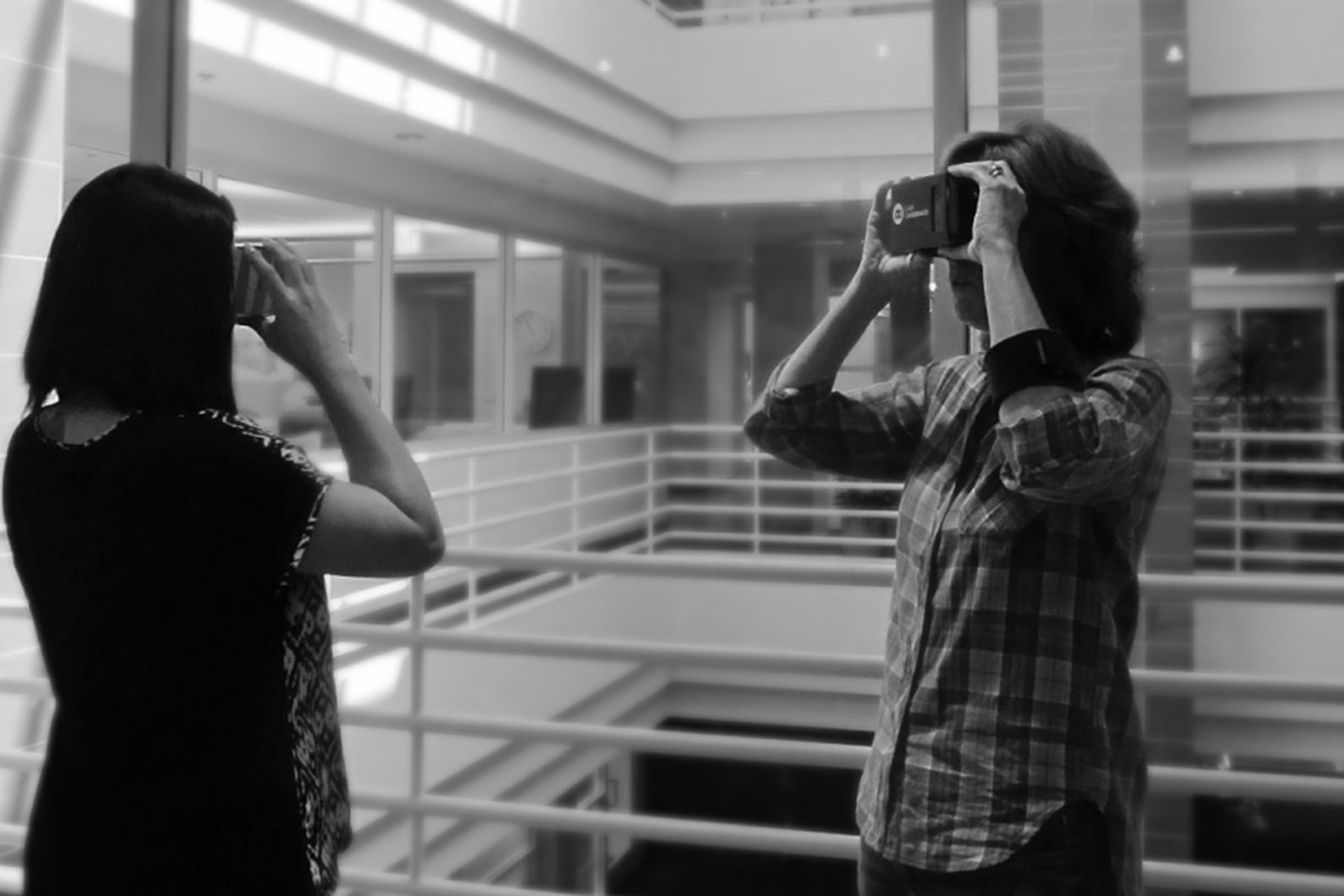 “Holy %&$#” was the phrase we heard from most of the office as first time viewers stood up to put on the goggles. It’s an amazing experience to witness the effect of going from sharing a 2D floor plan to actually putting people in the space. We are very excited for this new design horizon and you can bet TLCD Architecture is going to keep pushing it’s abilities and usability. We look forward to what Autodesk might throw our way in the near future…3D walkthroughs maybe? Who knows, but TLCD is ready and excited for what might be brewing.
“Holy %&$#” was the phrase we heard from most of the office as first time viewers stood up to put on the goggles. It’s an amazing experience to witness the effect of going from sharing a 2D floor plan to actually putting people in the space. We are very excited for this new design horizon and you can bet TLCD Architecture is going to keep pushing it’s abilities and usability. We look forward to what Autodesk might throw our way in the near future…3D walkthroughs maybe? Who knows, but TLCD is ready and excited for what might be brewing.

